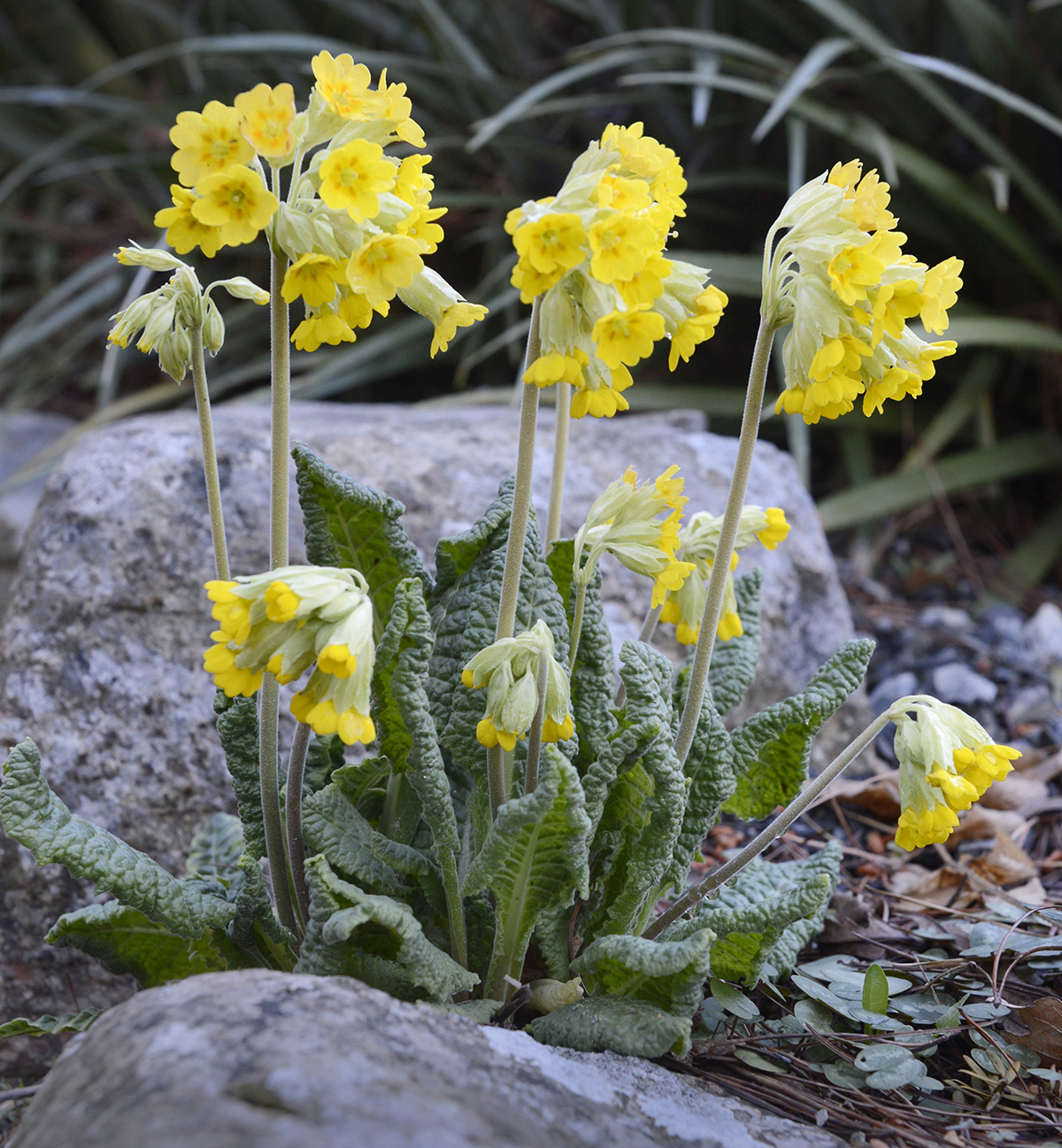Simple Plant Still Brings Pleasure
This article was first published on 26 Sep 2018.

Primula veris
After a decline in its natural habitat over the last few decades the cowslip, Primula veris is once again becoming a common sight in early spring. It grows in woods, grass verges and meadows throughout Europe and western Asia.
Flowers are held on tall hairy stems above a rosette of wrinkled, bright green leaves. The umbel is one sided and the flowers have a characteristic droop. On closer inspection the bright yellow blooms sport an orange spot on each petal. A subtle sweet scent can be detected. Seed pods develop slowly inside the pale green bracts which surround each flower. Very occasionally, red and orange forms can occur.
Cowslip will grow happily in most soils except those that are water logged; it will cope with periods of dryness once it is established and dislikes heavy shade.
The common name may have come from the observation that this primula would flower in pasture where cows had been grazing: the Old English word cūslyppe basically translates as cow slime.
Primula veris has a history of herbal uses such as a calming cowslip wine, a salad ingredient, and an infusion to drive wrinkles away.
It is often the most common of flowers that can be the most stunning and this lovely primrose is no exception. Flowering at present at Dunedin Botanic Garden, it grows on the top path of the rock garden towards the north end, in the Geographic Collection’s Himalayan border and in the lower botanic garden’s Camellia sasanqua border.


